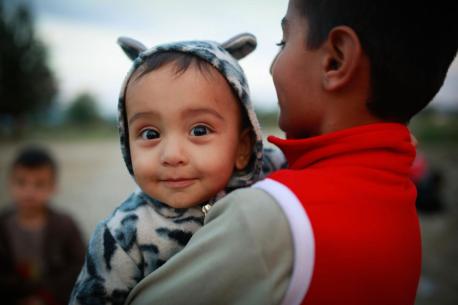
Ending Violence Against Children
Even indirect exposure to violence can result in serious long-term consequences on a child's life and future. The global community has agreed to a set of strategies aimed at ending violence against children.
A child dies every five minutes as a result of violence
Violence against children is widespread all around the world. Violence against children and adolescents includes physical, sexual, and emotional abuse, and neglect. For infants and younger children, violence mainly takes the form of maltreatment at the hands of parents, caregivers and other authority figures.
As children grow older, peer and intimate partner violence – bullying, fighting, sexual violence, and assault, often with weapons such as guns and knives – also become common.
Over the course of their childhood, one in four children suffers physical abuse and almost one in five girls and one in 13 boys suffer sexual abuse. Homicide is among the top five causes of death in adolescents. And despite its high prevalence, this violence is often hidden, unseen or under-reported.
Children should feel safe at home, in school and in their communities. But it is in these places that most violence against children happens – often at the hands of the people they see every day.
Violence against children takes different forms
Gender-Based Violence: Nearly 1 in 5 girls is sexually abused at least once in her life, and a quarter of children under age 5 live with a mother who has been a recent victim of intimate partner violence
School-Based Violence: Half of the world's teens experience peer violence in and around school, and more than 1 in 3 students aged 13 to 15 experience bullying
Online Violence: More than 175,000 children go online for the first time every day, exposing them to cyber-bullying, sexual abuse and exploitation and breaches in data privacy, among other forms of digital violence
Even indirect exposure to violence can result in serious long-term consequences on a child's life and future. Fortunately, the global community has agreed to a set of holistic and integrated approaches aimed at ending violence against children.
A global framework to end violence against children
UNICEF and the World Health Organization (WHO) — in coordination with the Centers for Disease Control (CDC) and the U.S. Agency for International Development (USAID) — developed the INSPIRE framework, a set of seven evidence-based strategies to end violence against children.
These strategies include:
implementation and enforcement of laws
changing harmful gender and social norms
creating and promoting safe environments
enabling parent and caregiver support
advancing income support and other economic solutions (microfinance)
strengthening response and support services
supporting education and life skills
UNICEF USA has consistently called on Congress to develop and implement a coordinated strategy based on this INSPIRE framework.
Learn more about UNICEF's work to keep children safe from violence, exploitation and abuse.